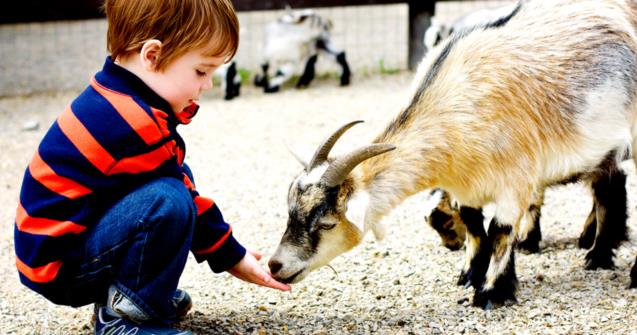
What animals eat
Activities for toddlers and babies
A theme that will provide little ones with the chance to explore animals and discover what they eat.
AREA SETUP
Animals everywhere
Display pictures of different types of animals throughout your daycare. Hang small stuffed animals from the ceiling.
ROUTINES AND TRANSITIONS
Animals like to eat…
At lunch time, establish a connection between the foods children eat and what animals eat. For example, you could tell children they are eating cheese just like mice or explain that cats like to eat fish if you are serving fish sticks. If you have prepared a salad for your group to eat, tell children rabbits love salad. You may have pictures of the animals on hand to help children understand.
SENSORY ACTIVITIES (look)
Pictures of our pets
Ask parents to photograph their pets when they are eating. Display the pictures on a wall and add pictures of your own pets. Talk about each picture with your group.
SENSORY ACTIVITIES (taste)
Different ways to eat a banana
Plan to serve bananas at snack time. Explain how monkeys love to eat bananas too. Call upon children’s imagination and tell your group that a silly monkey played with your bananas. Explore different ways you can eat bananas with the infants and toddlers in your group. They will enjoy eating them mashed, diced, cut lengthwise, and sliced into rounds.
ARTS & CRAFTS
Birdfeeders
Collect empty milk cartons. Wash them and wrap them with construction paper. Let babies and toddlers draw on the milk cartons. Cut an opening in each one and pour birdseed inside. Hang the birdfeeders from the branches of a tree in your yard, high enough so little hands can’t reach them (beware of allergies). With your group, observe the birds that visit your birdfeeders.
Animals and modeling dough
For this activity, you will need modeling dough and animal figurines. Encourage older toddlers to use the modeling dough to represent tiny pieces of food they can use to “feed” the animals.
MORAL AND SOCIAL ACTIVITIES
Feeding the animals
Collect several stuffed animals. Add tiny bowls and empty boxes of dog or cat food. Let children play freely. They will have fun feeding the animals.
Animal puppets that know what they like
You will need several animal puppets. Set a variety of plastic food items on the floor. Insert your hand in one puppet at a time and move the puppet to make it look as if it’s eating. Tell your group that, just like people, animals like certain food items and dislike others. You can, for example, make a horse puppet eat an apple. Tell children horses love apples, but they don’t like strawberries for example.
COGNITIVE ACTIVITIES
What animals eat
Cut several circles out of colourful construction paper. On one side of each circle, stick a picture of an animal. On the opposite side of each circle, stick a picture of something the animal likes to eat. Laminate the circles. With your group, observe both sides of each circle. For example, when you turn the picture of the squirrel over, children will discover that squirrels like to eat nuts. Name each animal and what it likes to eat.
Catnip
Grow catnip with your group. Let toddlers manipulate the dirt and play with it. Add water and encourage them to mix the water into the dirt. Have them fill tiny containers with dirt and add a few catnip seeds to each one. Watch the catnip grow over the next two weeks. Children who have cats at home will love to bring their catnip home as a treat for their feline friend. Others can simply give it to someone they know who has a cat.
PHYSICAL ACTIVITY AND MOTOR SKILLS
Searching for carrots
Tell your group that Mr. Rabbit has hidden carrots throughout your daycare. They will find paper carrots as they play. You could, for example, have inserted carrots between the pages of popular books in your reading corner, in children’s shoes, under toys, etc. Set several stuffed rabbits here and there. Every time children find a paper carrot, they can pretend to feed a rabbit.
Chantal Millette
Early childhood educator
Educatall.com is not responsible for the content of this article. The information mentioned in this article is the responsibility of the author. Educatall.com shall not be held responsible for any litigation or issues resulting from this article.

 Home
Home Theme activities
Theme activities
 Babies and toddlers
Babies and toddlers
 Arts and crafts
Arts and crafts
 Science
Science
 Creative recipes
Creative recipes
 Tips and tricks
Tips and tricks
 Special needs
Special needs
 Extra activities
Extra activities
 Educ-TV
Educ-TV
 Newsletter
Newsletter  Online store
Online store Educatall club
Educatall club

